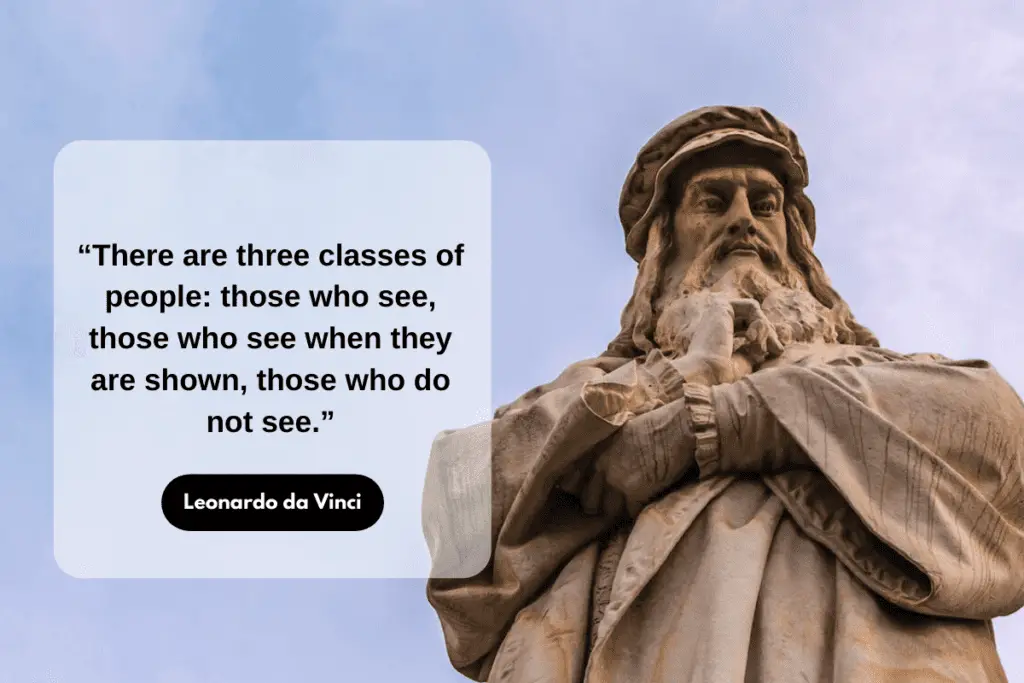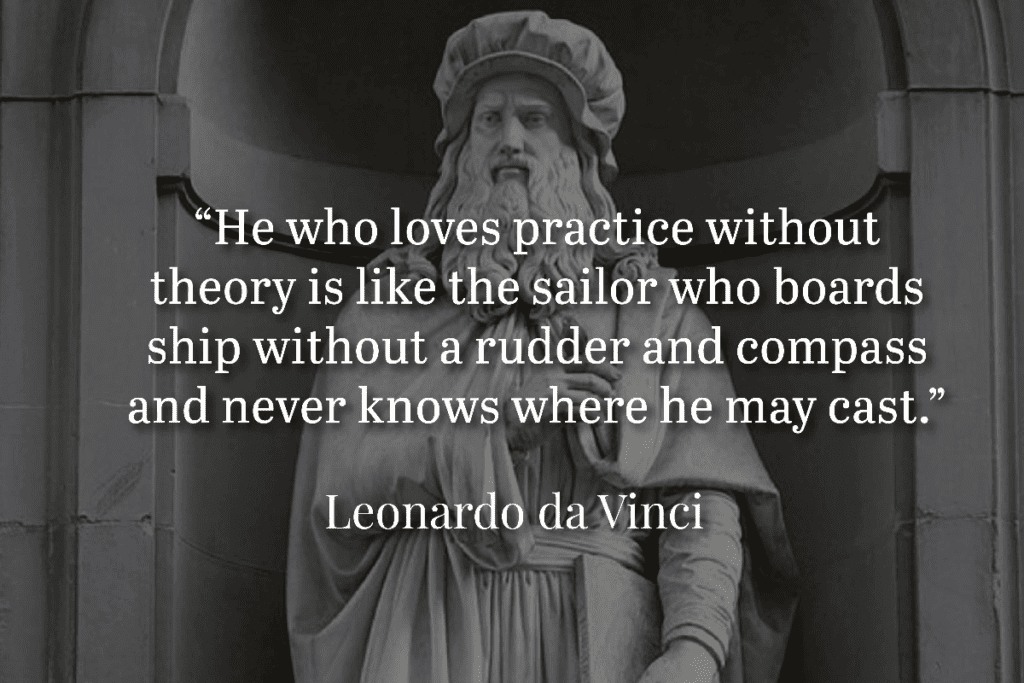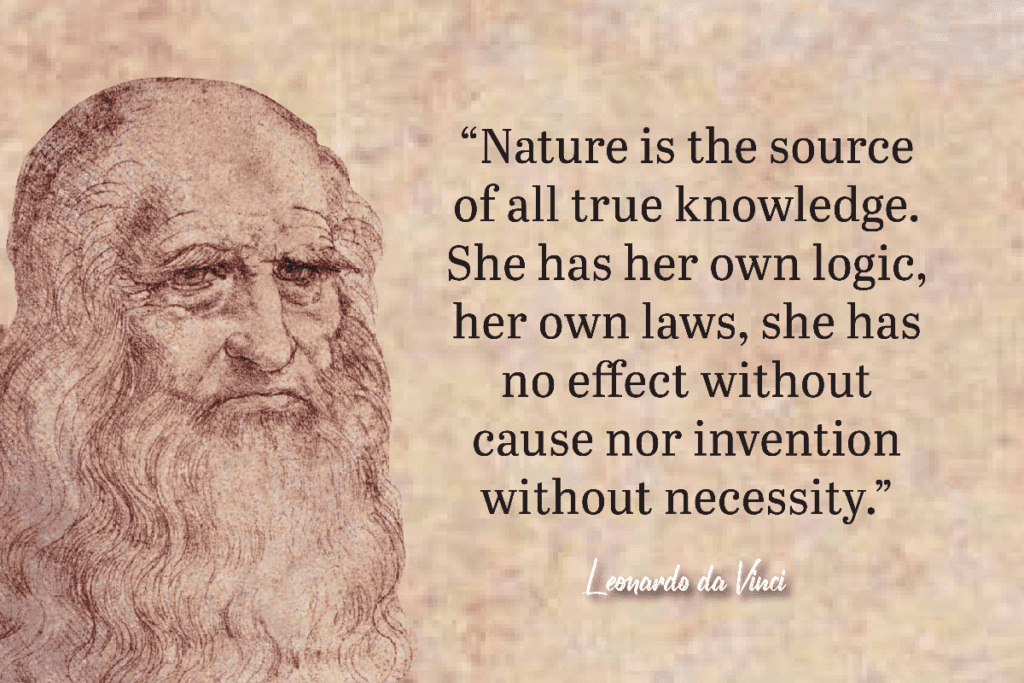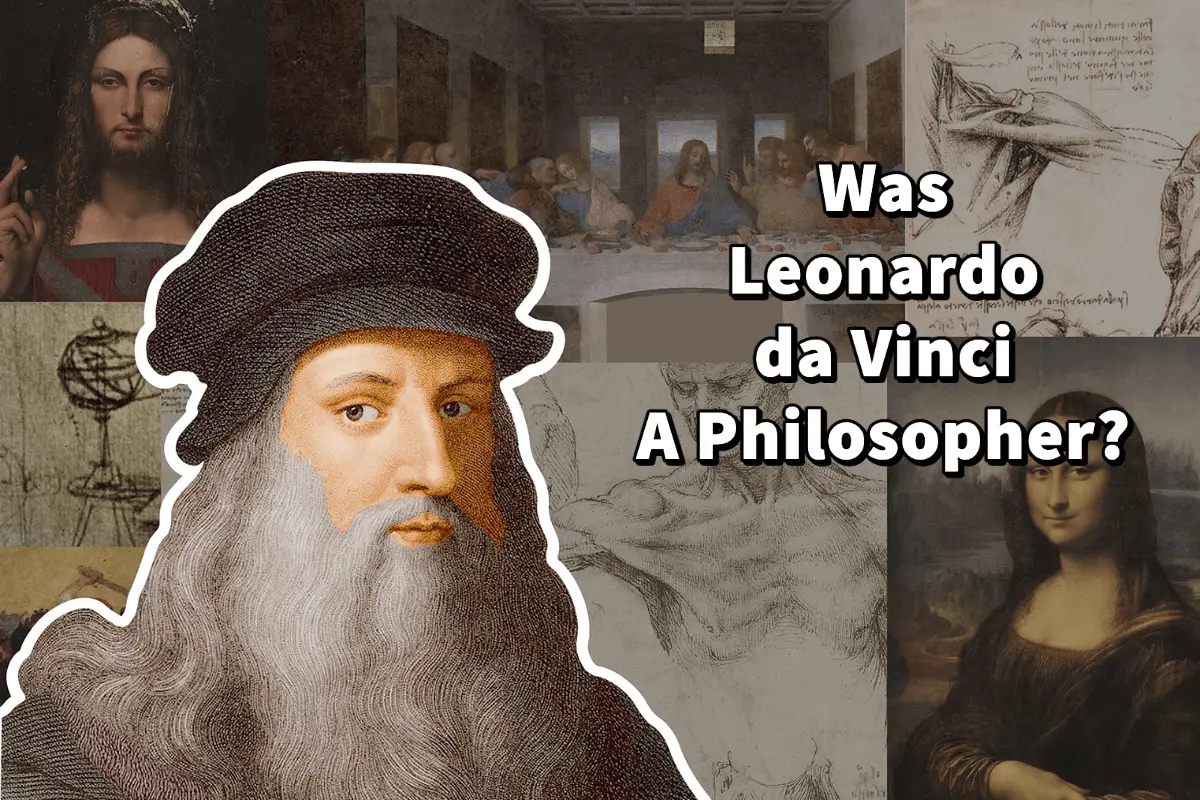When many people think about Leonardo da Vinci, they think of him as an artist. The truth is that Leonardo da Vinci was a great artist, but he also was an individual who had many different professions, including philosophy.
Leonardo da Vinci was a philosopher; being a philosopher means that a person wants wisdom. Leonardo was one person who tried to seek knowledge or enlightenment in his life. Leonardo was an active observer and learner of the human body, behavior, and nature.
Table of Contents
- What Is A Philosopher?
- Leonardo da Vinci Was A Philosopher
- Traits That Helped Make Leonardo da Vinci A Philosopher
- Frequently Asked Questions
- Related Questions
What Is A Philosopher?
To answer if Leonardo da Vinci is a Philosopher, we need first to understand what a Philosopher is. One of my favorite definitions is in the Merriam-Webster dictionary’ they define being a Philosopher as:
a person who seeks wisdom or enlightenment : SCHOLAR, THINKER
Merriam-Webster Dictionary
With this definition in the Merriam-Webster Dictionary, a philosopher seeks to find wisdom and enlightenment about all kinds of things in their life, but usually about life itself.
The word philosopher comes from the Greek word “philo- sophia,” which means “love of wisdom.” So, the word philosopher means someone who loves and seeks wisdom in their lives.
Leonardo da Vinci himself told us about how he looked and viewed learning or seeking wisdom in life when he said, “Learning Never Exhaust The MInd,” Leonardo da Vinci.

“Learning never exhausts the mind.”
Leonardo da Vinci
We learn from his thoughts that Leonardo was always looking at learning as he felt that learning would never exhaust his mind.
Leonardo da Vinci Was A Philosopher
Many can argue that Leonardo was not a philosopher as he did not study philosophy, and it was not his leading career. Leonardo had many jobs and titles, from artist, scientist, inventor, and philosopher.
But the reason why he is considered a Philosopher is because Leonardo was always a seeker of wisdom throughout his life. Not only was he a great artist, but he also was the unique kind of person who was curious about things around him, especially nature and the human body.
During his lifetime, Leonardo personally dissected at least 30 human bodies. He did this to study and learn about the human body and how our bodies functioned. There is no doubt that much of what he learned helped advance medicine and medical knowledge.
He dissected the human body, but he also used his artistic skills to draw out and write about the human body. We find many of his thoughts and findings in his notebooks and writings.
Leonardo understood that being a philosopher meant that he would learn wisdom and then seek to help lay out what he had learned so that others could follow and understand. Throughout his life, whether as an artist or as a scientist, his goal was to record things in his notebooks so that others could follow and learn what he had learned.
Leonardo spoke about how he saw and understood the importance to use his mind for knowledge, wisdom, and understanding when he said:

“Iron rusts from disuse; water loses its purity from stagnation… even so does inaction sap the vigor of the mind.”
Leonard da Vinci
Leonardo taught us the importance of seeking to learn wisdom in our lives. His thoughts in the notebooks show us how he thought about life. He left so much of his thoughts and understanding with us that they are still relevant today.
Traits That Helped Make Leonardo da Vinci A Philosopher
Leonardo da Vinci was a man who had the traits of a philosopher. He understood that to be a great artist, he must also be a great observer of life, especially human beings and natures.
Here are some of the traits that Leonardo da Vinci had and why these traits helped make him a philosopher:
Leonardo Was An Observer Of Life
Leonardo was a great observer of human life. He understood to be a great artist, and he needed to be a great philosopher.
A great example of that is his painting of The Last Supper, where he painted the exact moment when Christ told the Apostles that one of them would betray Him.
His painting studies human reactions, personalities, and how each of the apostles may have reacted at this exact moment in time. We can see Peter with a knife in his hand, Doubting Thomas pointing up as to question life, and John, also known as John the Beloved is swooning back as it in distress, and Judas Iscariot, who betrayed Christ for the silver coins, is shown clutching his small purse with the coins in it.
By clicking here, you can learn more about The Last Supper by reading our blog What Inspired Leonardo da Vinci To Paint The Last Supper?
Leonardo himself told us how he was an observer of life when he said:

“There are three classes of people: those who see, those who see when they are shown, those who do not see.”
Leonardo da Vinci
Leonardo da Vinci Had A Thirst For Knowledge And Understanding
Leonardo da Vinci was an individual with a thirst for knowledge and understanding about life. In particular, he spent his life seeking to understand what it meant to be human.
One of Leonardo’s most controversial things was dissecting the human body. At this time, this was considered blasphemy by the Catholic Church that controlled the state of Italy. This did not stop Leonardo, even if he hid his findings and observations in his many notebooks.
As a faithful philosopher, Leonardo said that about the right way to learn:

“He who loves practice without theory is like the sailor who boards ship without a rudder and compass and never knows where he may cast.”
Leonardo da Vinci
Leonardo understood that to be a true understander of life, you needed to understand both the practice and the theory or philosophy behind it. It is essential to learn and know your direction when you are learning.
Leonardo Studied Human Behavior And Nature
Leonardo studied human behavior and nature. He understood that understanding these things would be necessary for him as an artist, scientist, and human being. The understanding he gained with this study helped make him a great artist.
We can see this come out in many of his great paintings. The Mona Lisa painting is an excellent example of this. When we look at the Mona Lisa, we can feel the emotion coming out of the painting, and it is almost like her eyes are laughing at us, and the smile is following us around.
Besides studying human behavior, he also studied nature. Nature was an essential part of all human life and living.
Leonardo said this about nature our study of nature:

“Nature is the source of all true knowledge. She has her own logic, her own laws, she has no effect without cause nor invention without necessity.”
Leonardo da Vinci
Leonardo, in every sense of the word, was a philosopher. He looked for wisdom in all forms and would seek out wisdom throughout his life. He was a great observer of nature and human beings. For Leonardo, learning and understanding were essential.
When you read many of his words, you can see how important it was for him to continue learning and gaining wisdom in life; this thirst and study of wisdom helps ensure the word philosopher is added to his legacy.
Anita Louise Art is dedicated to art education, great artists, and inspiring others to find and create their art. We love art that uplifts and inspires. #ArtToMakeYouSmile! #ArtToMakeYouHappy!
If you want to see any of my art, you can find out more by clicking here. If you are interested in what inspires me and my paintings, you can discover more by clicking here.
We have a free newsletter and would love you to be part of our community; you can subscribe to the newsletter by clicking here. If you have any questions, I would be happy to talk to you anytime. You can reach me, Anita, by clicking here.
Subscribe to our Anita Louise Art YouTube Channel with great videos and information by clicking here.
Join us for our podcast “5 Minutes With Art.” just 5 minutes a week with us to discover and learn about great art and artists. You can find out more about our podcast by clicking here.
Frequently Asked Questions
Was Leonardo da Vinci considered a philosopher?
While Leonardo da Vinci is primarily known as a painter, scientist, and inventor, he also displayed philosophical tendencies through his observations, curiosity, and pursuit of knowledge.
What does it mean to be a philosopher?
Being a philosopher involves seeking wisdom and knowledge, engaging in critical thinking, and contemplating fundamental questions about life, existence, ethics, and the nature of reality.
How did Leonardo da Vinci seek knowledge and enlightenment?
Leonardo da Vinci sought knowledge and enlightenment through keen observation, meticulous note-taking, scientific experimentation, and exploring various fields of study such as anatomy, physics, engineering, and the arts.
Was Leonardo da Vinci an active observer?
Yes, Leonardo da Vinci was an active observer, constantly studying and closely observing the world around him. He paid attention to details, whether it was in the human body, natural phenomena, or the behavior of animals.
What areas of knowledge did Leonardo da Vinci study?
Leonardo da Vinci studied various disciplines, including anatomy, physics, mathematics, engineering, geology, botany, architecture, and the arts. His diverse interests and pursuits reflected his commitment to acquiring knowledge.
Did Leonardo da Vinci have philosophical ideas or beliefs?
While Leonardo da Vinci did not develop a systematic philosophical framework, his writings and sketches reveal philosophical ponderings on subjects like nature, beauty, the human condition, and the interconnectedness of various phenomena.
How did Leonardo da Vinci’s philosophy influence his artistic works?
Leonardo da Vinci’s philosophical mindset influenced his artistic works by incorporating a deep understanding of human anatomy, the laws of nature, and a quest for capturing realism and emotion in his paintings.
How did Leonardo da Vinci study the human body?
Leonardo da Vinci conducted extensive anatomical studies by dissecting cadavers, making detailed drawings, and recording his observations. His anatomical sketches demonstrate his deep understanding of human anatomy.
Related Questions
What Inspired Leonardo da Vinci To Paint The Last Supper?
Duke Ludovico Sforza commissioned Leonardo to paint the Last Supper mural. What makes the Last Supper mural so unique is that he painted it at the exact time when Christ told the Apostles during The Last Supper meal that one of them would betray him. Leonardo showed the apostles’ reactions, including Judas, who betrayed Christ.
By clicking here, you can learn more by reading What Inspired Leonardo da Vinci To Paint The Last Supper?.
What Did Leonardo da Vinci Contribute To Medicine?
Leonardo da Vinci contributed a lot to the medical field of study. His work contributed to our understanding of anatomy, medical physics, biomedical engineers, and neuroscience. He was fascinated with the human body as an artist and scientist.
By clicking here, you can learn more by reading What Did Leonardo da Vinci Contribute To Medicine?.


